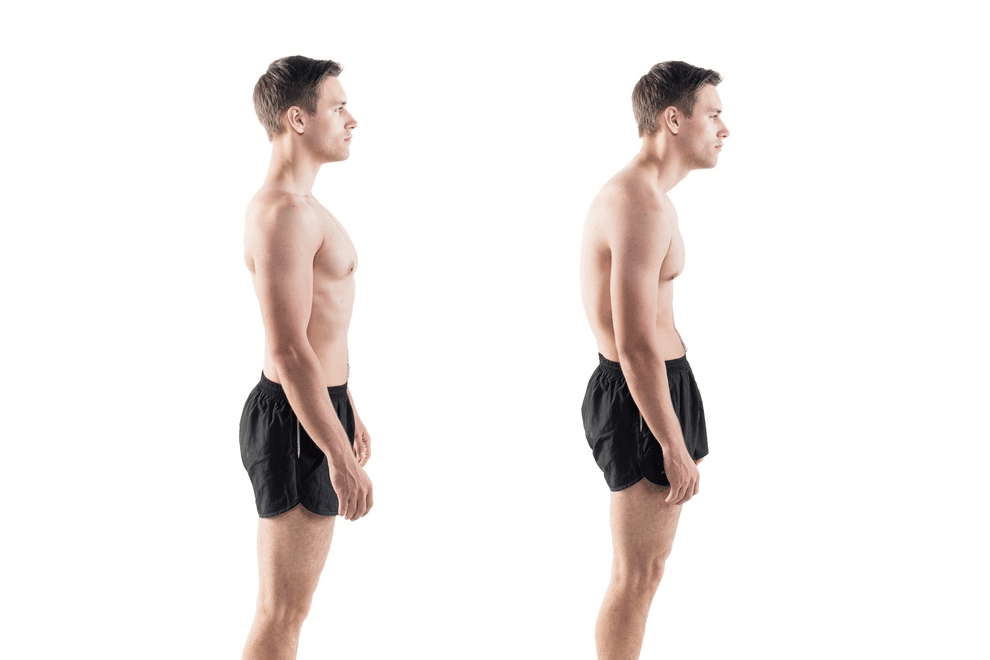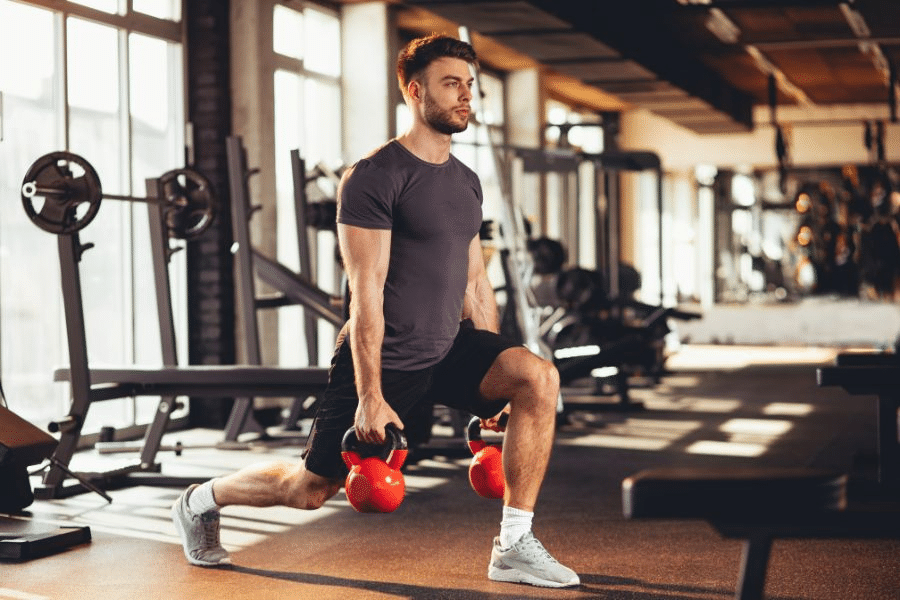The average person spends about 7 hours per day looking at a screen. Most of which is in a hunched over position, switching between staring at our work computers and phones. A typical computer or phone viewing position wreaks havoc on your posture, leading to rounded and internally-rotated shoulders, forward head carriage, and exaggerated or decreased low back curve. Fortunately, you can reverse much of this damage through exercise. We’ll review the best exercises to improve posture, and why it’s important.
Benefits of good posture
According to Harvard Health, good posture improves your long-term spinal health and prevents back pain. If one part of your posture is out of alignment, it negatively affects the rest of your overall health. Other joints and muscles must overcompensate to keep your weight balanced. This additional strain can lead to long-term back and joint pain, muscle imbalances, and reduced shoulder and neck function.
Proper posture also helps you appear taller, broader-shouldered, thinner, healthier, more confident, more energetic, and more powerful. Probably smarter too. Who wouldn’t want a magic pill to enhance all of these traits? Improving your posture is that magic pill. It really is the easiest natural upgrade you can make to your overall appearance. See how much better the gentleman below looks with proper posture?

Key exercises to improve posture
Poor posture results from muscle imbalances and poor muscle flexibility due to prolonged periods in anatomically poor positions, like spending too much time staring at a screen. Fortunately, the exercises and stretches below can reverse these effects. These can also accentuate the ideal V-shape upper body.
- Face pulls – This is probably the single best exercise to fix posture, as it works the muscles that directly pull your shoulders back (lower traps), as well as external shoulder rotation (helping to pull the shoulders broader). You can do the bodyweight version with rings or a TRX setup, or you can do the weighted version with a cable machine and the long rope attachment.
- Different row variations – Strengthening all of the muscles of the upper back will further correct the common imbalances that lead to poor posture. Rows directly target these muscles and are a core component of any good workout routine, but especially a routine focused on fixing bad posture. Any row variation will work – seated rows, chest supported rows, bodyweight rows (with TRX, rings, or a fixed bar), dumbbell rows, and standing single arm cable rows are the most popular and proven row variations.
- Hip-hinge variations / back extensions – The key to maintaining an upright posture starts with the lower back and glutes. Hip-hinge variations, like the traditional deadlift, Romanian deadlift, stiff-leg deadlift, or kettlebell swings, strengthen these muscles. These are fairly advanced movements, so if you’re more of a beginner in the gym focus on back extensions, starting with just bodyweight and then adding weight as you get stronger.
- Pull to push ratio – Many men focus on the muscles they can see in the mirror, which causes them to overwork their “pushing” muscles (chest and triceps) compared to their “pulling” muscles (back). This is terrible for your body and can further imbalance an already poor posture. To improve your posture, you should do 4 pull exercises for every 3 push exercises. For example, if you do 3 sets of bench press, you should do 4 sets of rows.
- Shoulder mobility – To reverse the effects of spending too much time slouched over a screen, you need to lengthen and open the chest and shoulder muscles affected. The two easiest and most effective shoulder mobility exercises are shoulder pass throughs and the doorway shoulder stretch. You can also check out these yoga poses for additional mobility exercises.
Practice good posture
As you walk around, pay close attention to your posture. Even if you implement the above exercises, our bodies tend to default to our previous bad habits. You need to intentionally correct your posture in everyday situations.
When walking, make sure your head is up, chin slightly tucked, your shoulders are back and externally rotated, and your arms are relaxed by your side. Your ears, neck, shoulders, and hips should all be in a straight line. Look at your posture in the mirror and see what looks best. The most aesthetically pleasing posture also tends to be the most anatomically correct posture. You don’t want to overcorrect and misalign too far in the other direction.
Notice how it feels when your posture looks its best, and strive to keep this feeling when you walk around. You should feel more confident, find visual interaction with strangers much easier, and be able to easily scan with your eyes both near and far.
When seated at work, make sure to sit upright and align your ears neck and hips as much as possible. Try to keep your screen at eye level, and get out from your chair at least once per hour. Or you can get an adjustable standing desk and alternate between sitting and standing.



